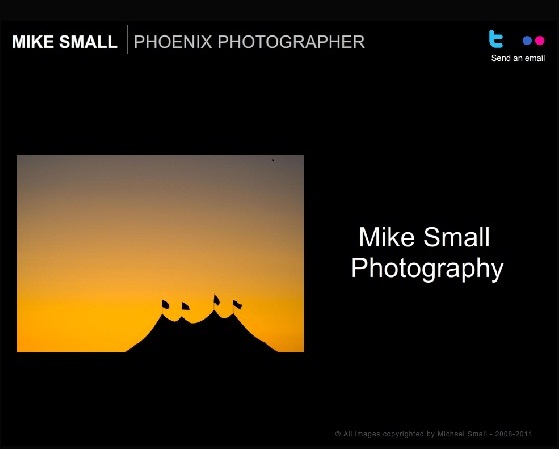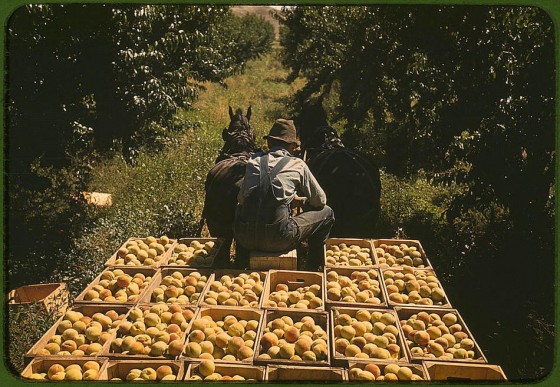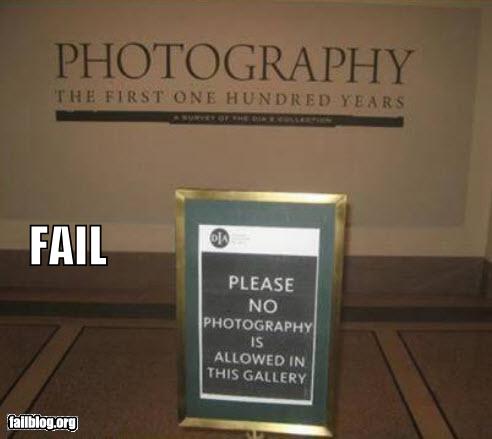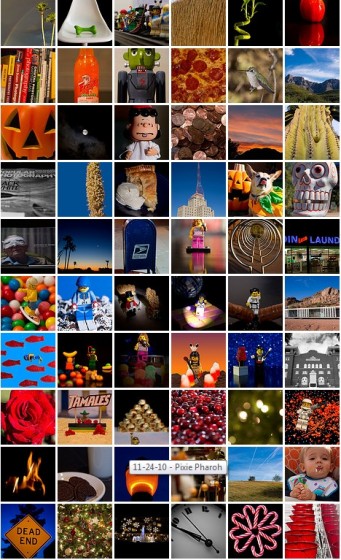 I wrote about some of the great Phoenix area neon signs from years gone by a while back. In my list of signs worth photographing was one in Mesa, AZ known as the Diving Lady. The lady graced the Starlite Motel on Mesa’s Main St. since the 1960s continually diving into a pool of neon “water.” Unfortunately in one of Arizona’s harsh thunderstorms last year the diving lady dove for the last time and the historic neon sign tumbled down to the Starlite parking lot.
I wrote about some of the great Phoenix area neon signs from years gone by a while back. In my list of signs worth photographing was one in Mesa, AZ known as the Diving Lady. The lady graced the Starlite Motel on Mesa’s Main St. since the 1960s continually diving into a pool of neon “water.” Unfortunately in one of Arizona’s harsh thunderstorms last year the diving lady dove for the last time and the historic neon sign tumbled down to the Starlite parking lot.
But not willing to let this piece of history and representative of a time gone by be forgotten the Mesa Preservation Foundation is leading the campaign to restore her to her former glory. The cost of restoration is estimated to be $60,000 to $65,000 and the foundation has set up a Facebook page along with accepting donations through PayPal on its own site to help fund the project.
And speaking of the Mesa Preservation Foundation’s website you can see images of the Diving Lady, both pre and post storm, including the one here taken by yours truly.
I discovered while in New York City a handy app for my Droid that put the subway maps right at my finger tips. Then there is the iPad app that puts NPR and all its newsiness right in my hands on demand. I can get the weather, search for a new job, do my banking, or find a new vegetarian recipe for dinner all with an app. So why not an Ansel Adams app? Well now fans of the photography of Ansel Adams have an app for that too. Created by Hachette Book Group, Inc. (publishers of Ansel Adams 400 Photographs) in collaboration with the University of Arizona’s Center for Creative Photography, the world’s most extensive archive of Adams’ work and writings, the Ansel Adams app”…provides a multi-tiered introduction to the life and work of the most honored American photographer of the twentieth century.” Here is what you get with the Ansel Adams app which sells for $13.99 through the iTunes Store:
- A slide show of 40 Ansel Adams photographs with your choice of audio narration, written commentary or music.
- The ability to run the photographs as accompaniment to your own music.
- The ability to send the photos as e-cards via email.
- Video clips from Ansel Adams documentaries.
- Letters between Adams and many famous people.
- A time line of key moments in Adams’ life.
- Web links to site that would be of interest to any fan of Ansel Adams.
So it is a bit like a coffee table book on the work and life of Ansel Adams that you get to interact with. For the die hard Ansel fan it is probably worth checking out.
 I have been working on putting together a second website to act more as a portfolio of my work for a while now. I want some thing that is not a blog to send to potential jobs, use in an “artist” profile and the like. So I started working with Wix, a free website editor to create my new site. Wix has templates for most every type of Flash based site you might want (mostly for photographers and artists). Their interface is relatively easy to use, although it can get a bit frustrating at times too when things don’t land exactly where you thought they would. Then once you have your site built Wix will host it for free (with advertising) on a domain such as www.wix.com/mywebsite. If you want it ad free and on your own domain their rates are pretty reasonable and you can upgrade to various different levels.
I have been working on putting together a second website to act more as a portfolio of my work for a while now. I want some thing that is not a blog to send to potential jobs, use in an “artist” profile and the like. So I started working with Wix, a free website editor to create my new site. Wix has templates for most every type of Flash based site you might want (mostly for photographers and artists). Their interface is relatively easy to use, although it can get a bit frustrating at times too when things don’t land exactly where you thought they would. Then once you have your site built Wix will host it for free (with advertising) on a domain such as www.wix.com/mywebsite. If you want it ad free and on your own domain their rates are pretty reasonable and you can upgrade to various different levels.
I played around with building my site for a while but never hit the publish button. But I have been getting more offers and inquiries lately to photograph beyond just my “art” so I decided it was time to pull the trigger. Check out version one of mikesmallphotography.com. It is still a work in process and I am tweaking things here and there. But so far I am pleased with the result and have already used it to start turning a hobby into something that could bring in some extra money. For new photography toys of course.
I recently attended a Rocky Mountain School of Photography(RMSP) weekend in Tucson, AZ and was very impressed. RMSP, for those who are not familiar with it, is a Missoula, MT based photography school that offers a wide range of education opportunities in photography. Their programs range from photography career training, to photography workshops based in some of the most beautiful and photographic location in the world to the Photography Weekends that I attended.
A Weekend with RMSP is a two day seminar geared towards “…beginner-through-intermediate amateur photographers.” Each weekend is made up of 10 different photography seminars to choose from. Each student can select 5 of the ten sessions based on their personal photography goals and interests. The sessions are lead by experienced, working photographers and are very affordable. Only $179 for both days ($169 if you take advantage of early and online registration discounts). And you get a lot for your $179/$169.
The weekend I attend in Tucson was lead by Tim Cooper and Tony Rizzuto. I will come back to these guys in a bit. But first my thoughts on the 5 seminars I attended during the weekend.
The seminars we had to pick from are listed here. I chose the ones in bold.
Photo Basics I
Understanding Exposure: Using the Zone System for Color
Photo Basics II
Workflow: Processing Your Images with Adobe Lightroom
Introduction to Macro Photography
Light: Creating Mood and Dimension
Video for Photographers: Capture and Composition
Composition: Designing a Great Photo
Nature Photography
Photographing People
Keep in mind that these are geared towards amateur photographers at the beginner to intermediate experience levels. They are also short 2 hour sessions. So the instructors are packing in a lot of information into each session and trying to target varying skill levels. Don’t go in expecting in depth detail tailored to your specific level or needs. I personally was very please with every aspect of the weekend and if you keep these things in mind I think most amateur photographers can get a great deal out of a RMSP Weekend.
I felt that I gained the most out of the Understanding Exposure: Using the Zone System for Color seminar lead by Tim Cooper. One of the great things about the RMSP Weekend is that the instructors present the material in a very thorough and understandable manner. They pack a lot into two hours and do a very good job with examples and making the connection between the concepts and how they will impact and improve your images. Exposure is a concept that can be hard to grasp. Most of us know that the aperture, shutter speed and ISO are what we control to get the exposure we want but an understanding of the Zone System introduces how light and color play into exposure and how to use them to get the perfect exposure every time. This is one seminar I highly recommend attending.
Tony Rizzuto’s Composition: Designing a Great Photo was also very informative and very well presented. There are so many “rules” for great composition and Tony did an excellent job of surveying the vast majority of them and again presenting examples to illustrate each in practice. Whether it was S curves, negative space, or scale each were presented in a clear, understandable way with corresponding photographs demonstrating the concept for those of us that are more visual learners.
Each seminar I attended had something of value to offer. The only drawback was that I was limited to 5 of the 10 seminars and I would have liked to have the chance to attend a few others.
As for the instructors, Tim Cooper and Tony Rizzuto in the case of the Weekend I attended, I was impressed. I have taken photography classes before with teachers who are doing a job and are not very convincing that it is a job they like too much. The were essentially filling up the time. But it is obvious that Tim and Tony enjoy what they do and they put their whole selves into it. They were both personable, very well versed on photography, informative and entertaining. I cannot speak for any of the other instructors at RMSP but if these two are representative of the whole staff you can’t go wrong.
Overall, I can say that I got more out of this two day weekend than I did out of an entire semester of Digital Photography 101 at the local community college. It was packed full of useful information for the amateur photographer and I came away with at least 3 very useful bits of information that I am certain will improve my photography once I incorporate them into my shoots and practice them. Now if I can only drop $7500 and take 3 months off of life and attend the summer intensive in Montana. After the Weekend Seminars I would have no doubt that any other program from RMSP would be well worth the investment.
If you follow my blog with any regularity you may have noticed I have skipped by Photo of the Day and other posts for the last few days. Well thanks to what I think is a pretty nasty virus I have not been able to access my main computer. So no PhotoShop, no dual screen fancy work station, nothing. Plus I am in the Big Apple for a little three day getaway and photo trip. So I should have lots to share once I return and get things up and running.

The Denver Post, in it’s photo blog “Captured,” has a tribute to color photography before it was commonplace in America. The photographs were taken between 1939 and 1943 by photographers of the Farm Security Administration/Office of War Information. They capture rural and small town America towards the end of the Great Depression. But unlike the best known Great Depression era image, Migrant Mother by Dorothea Lange captured in 1936, these images were all in color, not so common at that time. Captured: America in Color from 1939-1943 represents a photographic milestone, color images, that is not that old, in the grand scheme of things. But in the age of digital is often taken for granted when just a flip of a button can switch an image between black and white or color.

The Eastman Kodak Company introduced Kodachrome color film in 1935. It has been the film used for many iconic photographs over the last 75 years including Steve McCurry’s photograph of an Afghan girl at Nasir Bagh refugee camp in Peshawar, Pakistan, in 1984. When Kodak produced the last rolls of Kodachrome film some were donated to the George Eastman House’s photography museum and one was given to Steve McCurry to shoot. McCurry shot part of the roll in New York City and part in India. NPR has a slide show of some of McCurry’s last Kodachrome images here.
Thanks to Fail Blog for this great photography fail. An exhibit on the first 100 years of photography with a sign out front that says “no photography allowed.”

365 days pass pretty quickly it seems. When I started my first 365 photo project on January 1, 2010 I had not anticipated that it would be a challenge to find the time to take 1 picture a day everyday for a year. And I didn’t quite make it to 365 photos. I had a total of 331 photographs in my 365 set on Flickr, so I was 34 short of a full 365 project.
When this project/challenge was coming to a close I told myself I was not going to do it again in 2011. Too much pressure. But then 2011 rolled around and a new 365 project was started. And I realized that it is a good thing to push my self to photograph every day, even if I don’t quite make it. And the feedback and praise (and even critiques) from fellow 365ers is valuable. So when a new project called Focused on 365 2011 was announced I signed up. One difference this year is that you don’t have to quite get one photo a day posted. You just have to get 7 a week which is a little easier to manage. We will see what happens. Hopefully I can get more than last year’s total of 331. The key is to make the time for something you love to do.

Ahhh, the new year. That means resolutions! Eat Better. Start Exercising. Get Organized. The same ones tend to pop up year after year. But this time around I am focusing my resolutions on my passion, photography. I figure if I publish them for the world to see I might have to hold myself a little more accountable to follow through on them.
1) Focus on portrait photography – when I first started my obsession with photography I steered away from portraits. In fact I was adamant about having no interest in photographing people. I was sticking to non-human subjects period. Then I took a photography class and it was an assignment. Since then I have done several portrait session and it isn’t so bad. But I need a lot of practice and need to read up on the “how tos.”
2) Learn more about lighting – Lighting is probably the most important thing to get right in photography just after picking the subject. This particular resolution ties into the portraits. It is not easy correcting bad lighting in Photoshop, trust me I’ve tried. So all the more reason to get it right up front. I have the lights now to master them.
3) Need to get to know Photoshop MUCH better – Photoshop and I am well acquainted. I can fumble around and basically get it to do what I need. But this is one powerful software program that I am not utilizing to its full potential. I have the books on the shelf but need to make the time to really dig into them and learn much more about Photoshop. Maybe a class?
4) More Photo Expeditions – OK, maybe “expedition” is a bit much. But I live within driving distance of some of the most beautiful landscapes in the country. I need to take advantage of that. As well as venture beyond Arizona’s borders. So here is my photo trip wish list for 2011:
In Arizona:
- Grand Canyon (in winter)
- Monument Valley
- Aravaipa Canyon
- Chiricahua National Monument
- Blue River
Outside Arizona:
- Los Angeles – specifically the Getty Museum and Disney Concert Hall
- New York City – been too long since I have been
- Yosemite or an equal caliber National Park
 I wrote about some of the great Phoenix area neon signs from years gone by a while back. In my list of signs worth photographing was one in Mesa, AZ known as the Diving Lady. The lady graced the Starlite Motel on Mesa’s Main St. since the 1960s continually diving into a pool of neon “water.” Unfortunately in one of Arizona’s harsh thunderstorms last year the diving lady dove for the last time and the historic neon sign tumbled down to the Starlite parking lot.
I wrote about some of the great Phoenix area neon signs from years gone by a while back. In my list of signs worth photographing was one in Mesa, AZ known as the Diving Lady. The lady graced the Starlite Motel on Mesa’s Main St. since the 1960s continually diving into a pool of neon “water.” Unfortunately in one of Arizona’s harsh thunderstorms last year the diving lady dove for the last time and the historic neon sign tumbled down to the Starlite parking lot. I have been working on putting together a second website to act more as a portfolio of my work for a while now. I want some thing that is not a blog to send to potential jobs, use in an “artist” profile and the like. So I started working with
I have been working on putting together a second website to act more as a portfolio of my work for a while now. I want some thing that is not a blog to send to potential jobs, use in an “artist” profile and the like. So I started working with 







